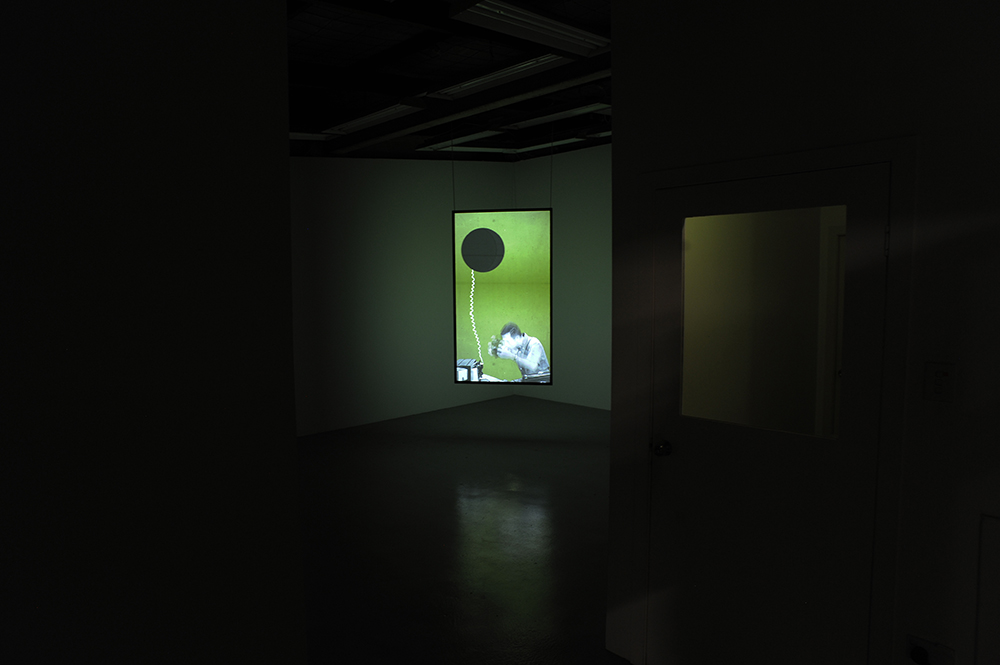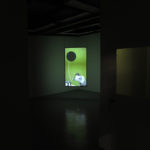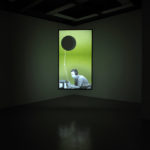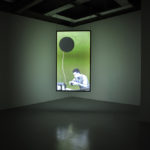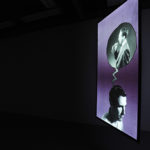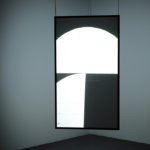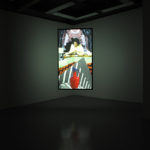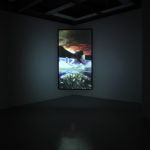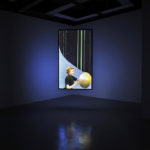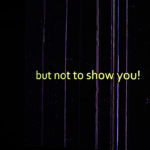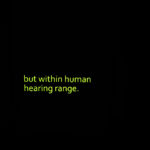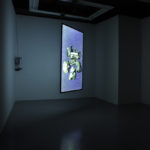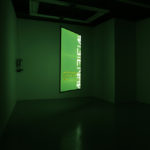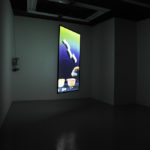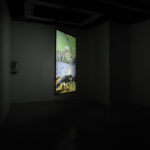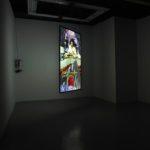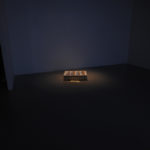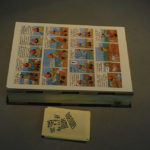An Archival Loop
By Rebecca Gallo
Compared to painting and sculpture, video art is new, but since the 1960s it has been taken in a number of distinct directions. It is documentation of live performances and public dissemination of private ones; it is moving photography, stop-motion wizardry, protracted documentary and minimalist arthouse. Video is also a medium for collage and remixing, starting from Dara Birnbaum’s Technology/Transformation: Wonder Woman (1978-79). Birnbaum ripped footage straight from the popular TV series Wonder Woman, repeating over and over the moments where the character Diana Prince transformed into the titular heroine. Birnbaum was using TV as the medium to reveal its own mechanics, its treatment of gender and ultimately its absurdity.
David Greenhalgh works in this tradition, using the recorded image as both medium and subject. Trained as an artist and also in information management as an archivist, Greenhalgh is a digital scavenger: he samples the archive, reviving fragments from obscurity and tending to them with hours upon hours of tedious rotoscoping: tracing outlines at 24 frames per second. His is a process of trawling, cutting, layering, splicing and re-stitching. The archive itself is the most unpredictable element in an otherwise careful and deliberate process.
The starting point for Greenhalgh’s The Eyes of the Power Company was a journal article of the same name (i), but the work itself was shaped by the raw material of its construction: an extensive archive of public domain videos (ii). Available clips become the language through which he communicates, and it is not always easy – or even possible – to find the exact image to express a particular thought or mood. It’s much like spoken language, where we deploy signs and signifiers with the wistful hope that they will be correctly decoded at the other end.
In Greenhalgh’s The Eyes of the Power Company, a German narrator, subtitled with deliberate inaccuracy, speaks to us directly. These subtitles explain that the narrator has invented a new way of speaking and listening. There are no words, only sounds. Rather than corresponding to words – those imprecise intermediaries that only serve to complicate and obfuscate – the sounds are actually electric images. The suggestion here is that images, broadcast via sound waves, are a more direct method of communication than words. This flips conventional wisdom about art and writing on its head: art, with its still and moving images, objects and sounds, is generally considered obscure and indirect, requiring lengthy textual explication in order to pin down its meaning. In The Eyes of the Power Company, the opposite is posited as true.
A deliberate move away from the primacy of words could suggest a frustration at their inadequacy: a fear of being misunderstood (surely misinterpreted text messages and emails cause countless relationship breakdowns every day). It also implies an anti-intellectualist stance, and a move towards a universal mode of communication. To think that we could learn to communicate from the start again in a new, more direct and universal way is also a profoundly utopian suggestion. That we might develop new senses for perceiving the world that we can’t conceive of now – as the narrator says, it’s like having a cochlear implant in your visual cortex. We are inside Plato’s cave, and dimensions exist out there that we cannot yet perceive with our underdeveloped senses and limited understanding.
Here we loop back around to the practice of archiving itself: we archive with an acute awareness of our own deficiencies. We archive so that researchers from an inconceivable future can look back on our present and perhaps find profound meaning in the minutiae that seem irrelevant or insignificant now. We hold onto clues from the past and present with the expectant hope that future developments will unravel current mysteries. Archiving is a profoundly hopeful belief system. It rests on faith that humans of the future will be better equipped to make connections, to extract more detail and meaning from cultural material, than we are able to now. It believes, in short, in the idea of continuing human progress towards further enlightenment and understanding.
The reasons we archive echo the reasons we make art. The significance of both practices may not be immediately apparent, but both archivist and artist hope that over time, meaning will emerge – both for themselves, and for a future audience. Some might be proclaimed geniuses posthumously (they were just ‘ahead of their time’). Mostly, though, we persevere with the hope that someone will look back on our work and draw some kind of modest meaning from the sedimentary layers we leave: a shock of insight; a glimmer of recognition; a reflection of themselves in a time and place of the past. We hope that a thought or idea will travel along the channel of time, reaching out and reminding someone that their feelings are not new. A moment of solidarity sparked from the archive.
A long and rather dry academic paper for such an evocative title, Veinot’s article examines the work of vault inspectors, who examine and repair underground electrical equipment. Kind of obscure, but also surprisingly relevant. The author talks about what information is generally sought and collected – privileged – by researchers in her field of Workplace Information Practices, pointing out that there is a bias toward more white-collar, upper-class professions. This is interesting in its analysis of what information is gathered, and therefore archived, suggesting that the archive, like history, can never really be complete.
ii https://archive.org/, a website with the noble mission ‘to provide Universal Access to All Knowledge’. It houses books, movies, software, music, websites, TV shows and more. Not all of archive.org’s materials are held in the public domain, however all the clips used by Greenhalgh are. As I understand it, this forms part of a noble attempt to function at the edges of capitalism: the only required space and materials for Greenhalgh’s work are a desk, computer, software and internet access (which includes, admittedly, access to archive.org’s massive servers. But he’s not making huge paintings from raw canvas and excessive oil paint in an overpriced inner-Sydney warehouse. It’s a step in the right (left) direction).
——————————————————————————————–
The Eyes of the Power Company:
A Berlin Wall beneath your feet
An internet drop, the modem’s reach
a radial fern from a finger click
an ice sheet detaches and reaches Sao Paulo
a man with no arms makes beautiful music
a city is levelled and sanctions soon follow
a brand-new bag designed for your dog
a racist attack at a tram station stop
an exploding phone
an internet tone
The Eyes of the Power Company is a short film made of other people’s films. It is a film about the limits of our understanding of the world and the inadequate tools and vocabulary we possess for knowing how things are: we must make do with what we’ve got, just as the film relies on second-hand footage.
Soundtrack contributions by Daniel Pliner aka Paleface.
The Eyes of the Power Company
David Greenhalgh
23/3-8/4/18
—-
